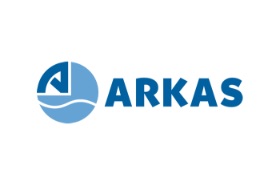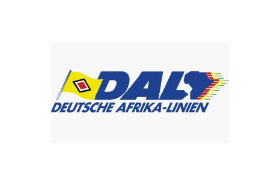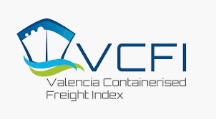The VCFI is the index created by the Port Authority of Valencia to reflect the evolution of the market rates for the export of full containers by sea from Valenciaport. VCFI stands for Valencia Containerised Freight Index. This index will serve shippers as a tool to predict the evolution of freight rates within their markets of interest, which is a key determinant of the cost of their export operations. On the other hand, it will also be useful for operators that offer such services, providing a benchmark for the evolution of their own freight rates and those on the market.
VCFI General
VCFI May 2025
In May 2025, the Valencia Containerised Freight Index (VCFI) recorded a slight drop of 3.27%, standing at 2,170.55 points. Since the beginning of the series in 2018, the index accumulates a growth of 117.05%. For its part, the Western Mediterranean sub-index showed a positive evolution, with an increase of 6.38%, reaching 2,990.55 points and an accumulated growth of 199.06%. Likewise, the Far East sub-index experienced a notable increase of 28.95%, reaching 2,987.89 points, with a cumulative increase of 198.79%.
This performance of the VCFI in May comes against a backdrop of a slight containment in the supply of maritime capacity. According to Alphaliner, the number of commercially inactive container ships increased slightly from 61 to 66 units in the first half of May, from 150,778 TEU to 217,799 TEU. However, this out-of-service capacity still represents a very low proportion of the overall fleet: only 0.7% of the total, up from 0.5% two weeks earlier, the lowest level in a year. Most of these vessels were idle for operational reasons, such as service reassignments, rather than due to lack of capacity demand.
Despite trade uncertainty – including the recent 90-day pause in tariffs between the US and China – shipping lines continue to operate virtually their entire available fleet, indicating strong pressure to maintain connectivity and services, even in an environment of volatile demand.
In parallel, and with regard to the energy market, in May 2025 the price of Brent crude oil showed an upward trend, closing the month at around USD 65.34 per barrel, representing an increase of 8.5% over the lows reached at the beginning of the year. This rebound occurred in a context of increased production by OPEC+ and other producing countries, which increased their supply by more than 1.2 million barrels per day through May, exceeding the projected growth in annual demand. Despite this increase in supply, inventories remained low and gasoline and diesel refining margins remained robust, supporting current demand and refinery utilization rates. On the other hand, the cost of VLSFO marine fuel experienced a slight decrease in May, standing at USD 521 per tonne in major hubs, according to Ship & Bunker data, a fact that represents partial relief for shipping operating costs.
According to Linerlytica, port congestion has shown signs of improvement, from a cumulative volume of 3.04 million TEUs in mid-April (equivalent to 9.6% of the fleet) to 2.56 million TEUs in week 20, corresponding to mid-May, representing 8% of total capacity, reflecting a reduction in congestion levels. This positive development in port operations coincides with recent data from Sea Intelligence, which points to a significant improvement in the overall reliability of shipping schedules. In April, punctuality reached 58.7%, increasing 1.7 percentage points over the previous month and reaching the highest level since November 2023. On a year-on-year basis, this index grew 6.5 percentage points, evidencing a favorable trend towards greater efficiency and stability in maritime supply chains.
The RWI/ISL index, a joint indicator of the Leibniz Institute for Economic Research (RWI) and the Institute for Maritime Economics and Logistics (ISL) that measures the volume of container traffic in the world’s major ports and serves to anticipate the evolution of global maritime trade, showed a slight recovery after the drop recorded in March. In its latest reading, the index stood at approximately 136.5 points (seasonally adjusted), up from a revised 135.3 points in the previous month.
This modest improvement suggests a stabilization of global seaborne trade, following the movements anticipated by operators during the first months of the year, marked by uncertainty in U.S. tariff policies. In addition, the report notes that, although the recovery is widespread, regional differences persist: European ports experienced a slight rise, with the North Range Index increasing from 112.1 to 112.4 points, while Chinese ports remained relatively stable, with the index barely varying from 154.8 to 155.0 points. Despite this stabilization, trade tensions between China and the U.S. continue to exert pressure on trade, which could limit a more pronounced recovery in the coming months.
VCFI Participating Companies

















